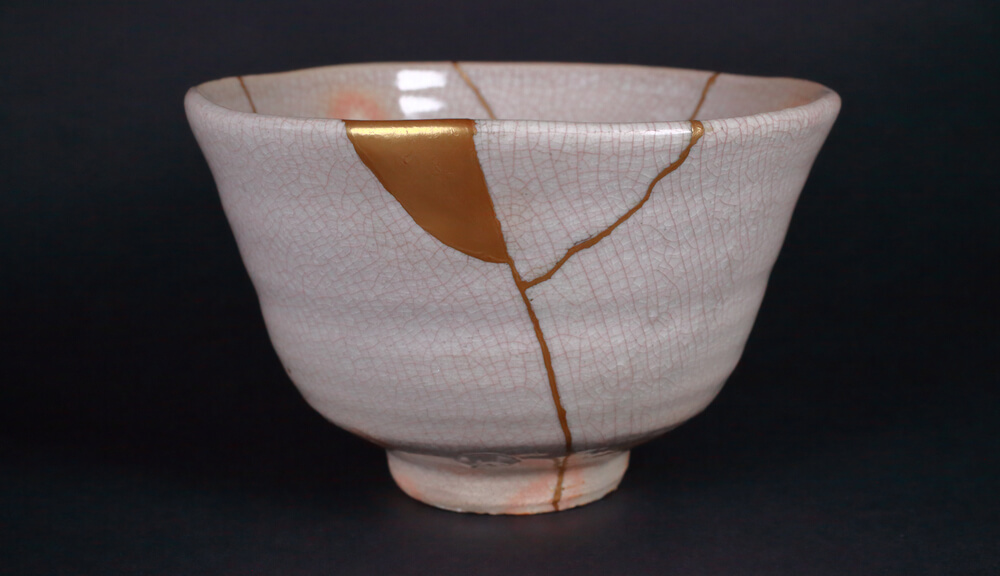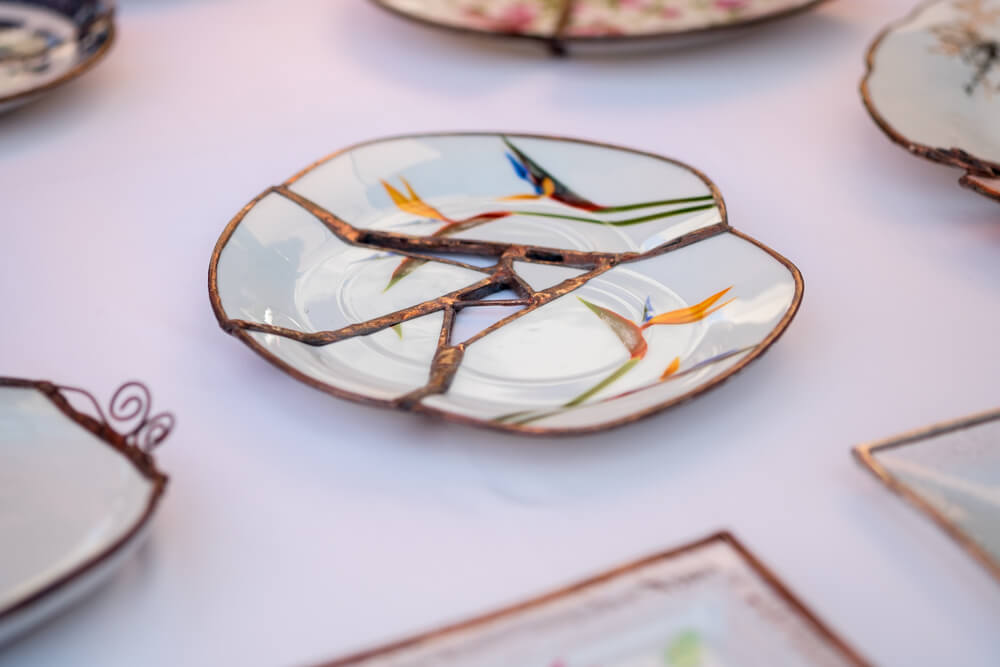Kintsugi: Giving Ceramics a Second Chance

Kintsugi is a centuries-old technique that originates from Japan and involves giving ceramics a second chance. This technique consists of repairing broken or old ceramic pieces.
The Kintsugi philosophy tells us that, in the face of adversity and mistakes, we must learn how to recover in order to heal the scars. In addition, this technique invites us to find beauty in scars.
Broken ceramic pieces take on a second meaning, suggesting that there’s no point in hiding scars. Quite the contrary, these scars revalue the beauty of the object. Undoubtedly, the breaks are part of the history of the object and make it unique.
Origin of Kintsugi

The origins of Kintsugi date back to the late fifteenth and early sixteenth centuries. According to legend, the Japanese emperor, Ashikaga Yoshimasa sent a beautiful bowl to be repaired in China that he wanted to use for the tea ceremony.
When the bowl was repaired and returned to him, the emperor wasn’t entirely happy with the result, which he felt was crude. So he sent for Japanese craftsmen to do a more refined job.
The Japanese craftsmen exposed the bowl’s reparation lines, thus discovering this new way of repairing ceramic objects.
Interestingly, during this time, some people began to purposely break their own ceramic pieces in order to apply this technique. They felt that Kintsugi gave an even more beautiful appearance to their objects.
By doing this, the old pieces that had been repaired began to have more value than those that never broke.
Giving ceramics a second chance

The Kintsugi technique is applied by assembling and joining the fragments with a varnish that’s sprinkled with gold, silver, or another precious material. With this, the ceramic recovers the original shape it had before breaking.
The golden scars remain visible and bring change to the aesthetic essence of the piece. This evokes the wear that time exerts on things, the changing identity, and the beauty of the imperfection.
Kintsugi is a technique that doesn’t try to hide the lines of the break. The pieces repaired with this technique show the scars of their past, acquiring a new vital dimension. This technique also tries to turn the pieces into unique objects.
With all this, Kintsugi has become a metaphor for the importance of resistance, self-love, and resilience in our lives. There’s no process of reintegration or revival without patience.
When it comes to the Kintsugi technique, the drying phase is one of the most important. The resin can take weeks to dry, although it often takes months, to harden. This is what guarantees its cohesion and durability.
Kintsugi is a philosophy of life

This ancient Japanese technique can be extrapolated to our lives. The essence of this idea is that when something with value or meaning breaks, we have to recover. We shouldn’t try to hide our scars or our frailty.
It’s important to repair our scars with things that are valuable, comparable to the gold used in the pieces, such as strength, virtue, or resistance. However, we have to be aware of our imperfections and our fragility. But, without a doubt, we have to take into account our ability to recover.
We mustn’t assume that broken ceramic pieces or pieces that have suffered the passage of time will not be beautiful again. This technique advocates that the pieces have a second chance, giving them a special touch that gives them sophistication.
In the Western world, the Kintsugi philosophy is gaining more and more strength, since it conveys the beauty of the imperfect. This is contrary to the popular Western belief that flaws aren’t beautiful and should be hidden.
In Western thought, when something is broken or flawed, it falls apart. Kintsugi proves that breaks and imperfections can be beautiful.
The Kintsugi technique gives ceramics a second chance, but not only that. This ancient technique will teach us to value that what’s broken in us brings us beauty through our scars. It teaches us to appreciate unique objects with history, much like ourselves.